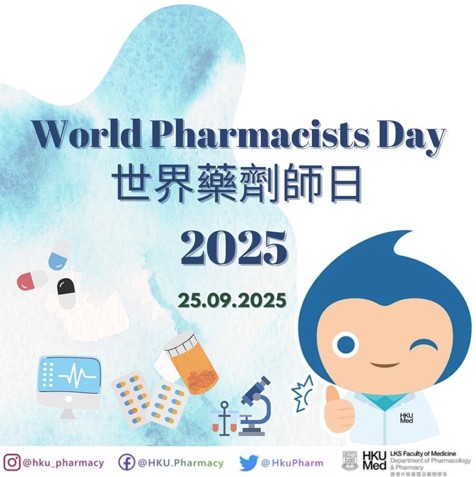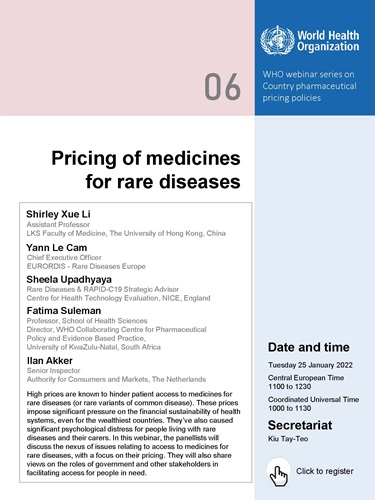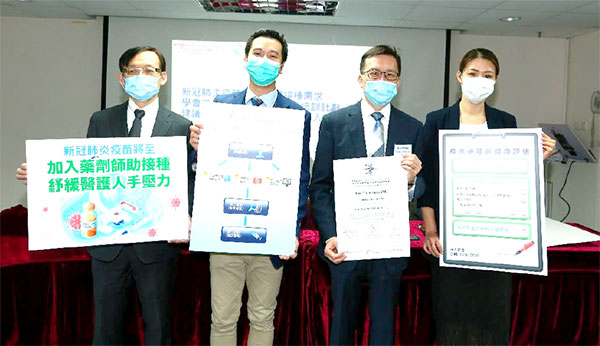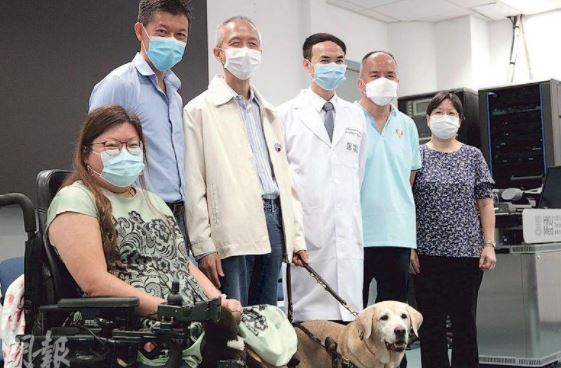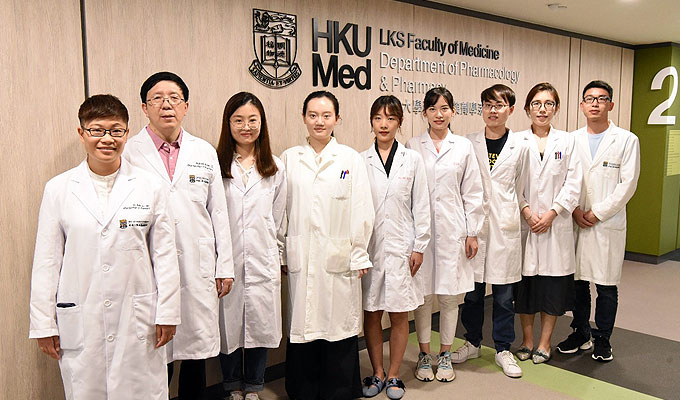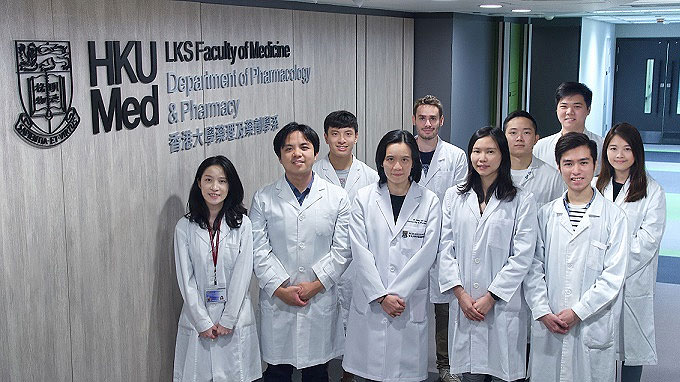Knowledge Exchange
|
04 Nov, 2025
Community pharmacy medication management service elderly support collaboration overview 服務分享會花絮:攜手推動社區藥物管理與長者健康—跨專業合作提升健康福祉 Community pharmacy medication management service elderly support collaboration overview 服務分享會花絮:攜手推動社區藥物管理與長者健康—跨專業合作提升健康福祉 Community pharmacists, social workers, and service organizations collaborated in a recent sharing session to enhance understanding and delivery of medication management and community pharmacy services for the elderly, focusing on personalized support, interdisciplinary cooperation, and improving health outcomes. |
|
03 Nov, 2025
報刊專欄 (am730) -社區藥劑師:戒煙路上的專業夥伴 報刊專欄 (am730) -社區藥劑師:戒煙路上的專業夥伴 戒煙對健康的好處毋庸置疑。研究證實,停止吸煙24小時內血壓心率會回落,數週內肺功能會改善,長期更可大幅降低癌症、心臟病及中風的風險。然而,尼古丁成癮加上心理依賴,令不少煙民屢戒屢敗。社區藥劑師正成為戒煙者最可靠的後盾。 社區藥劑師會詳細評估戒煙者的吸煙習慣、戒斷症狀,配合個人動機與生活模式,制定度身訂做的用藥計劃。戒煙治療並無標準方案,必須根據每人對尼古丁的依賴程度,以及身體狀況來調整劑量與療程,以達致平衡療效與安全。 市面上的尼古丁替代療法包括貼片、香口膠、口含糖,能有效紓緩戒斷症狀。某些處方藥如瓦倫尼克林(Varenicline)或安非他酮(Bupropion)亦可在醫生處方下使用。 社區藥劑師協助選擇合適劑型,教導正確使用技巧,並根據戒斷進展調整用藥方案,適時轉介予其他醫護人員作跟進。 藥物相互作用監察是藥劑師重要的職責。吸煙會加速某些藥物如部份精神科藥物的代謝,影響療效。藥劑師會檢視戒煙者的用藥記錄,與醫生溝通調整處方。戒煙後,因身體處理藥物速度回復正常,有些藥物需減量,防止副作用。 社區藥房作為無需預約的醫療接觸點,藥劑師能在服務使用者配發感冒藥或血壓藥時,留意其吸煙習慣並適時開展對話,這種觸發往往成為踏出戒煙第一步的關鍵契機。 隨著基層醫療發展,藥劑師不再僅是配藥者,更是健康守護者。社區藥劑師運用專業知識,為每位戒煙者度身打造最佳方案,平衡療效與安全。 「戒煙永遠不會太遲。」走出煙霧,迎向健康,社區藥劑師與你同行。 張德琳 香港大學李嘉誠醫學院 藥理及藥劑學系藥劑師 <刊載於《am730》> https://www.med.hku.hk/zh-hk/media/knowledge-exchange/newspaper-columns/2025/nov/am730_20251103 |
|
27 Oct, 2025
報刊專欄 (am730) -流感疫苗:守護健康第一道防線! 報刊專欄 (am730) -流感疫苗:守護健康第一道防線! 最近一宗涉及一名13歲女童不幸感染乙型流感併發腦病變、心肌炎及休克而最後病逝的個案,再次喚起市民應盡早接種季節性流感疫苗的重要。 每年秋冬,隨天氣轉涼,流感病毒逐漸活躍起來,帶來傳染與併發症的風險。常見症狀包括急性發燒、流鼻水、咳嗽、喉嚨痛、頭痛、全身乏力、肌肉及關節痛等,嚴重情況更可出現併發症,包括肺炎、敗血症、腦炎、心肌炎,甚至死亡。 預防勝於治療,接種季節性流感疫苗能安全有效地預防流感及其併發症。通常建議在每年秋天接種,讓身體有足夠時間產生免疫力(大概為接種疫苗後約兩星期)。有些人會問,為何要每年接種疫苗? 流感病毒會不斷發生基因變異,當流感病毒出現「抗原漂移」(輕微改變),便會產生新的病毒株,當中並沒有規律可預測。因此,每年世衛會收集不同地區傳播中的流感病毒資料,並建議流感季節應採用的流感疫苗組合,讓藥廠有足夠時間生產合適的疫苗。一般而言,所有年滿6個月或以上的人士都應接種流感疫苗,以保障自己及身邊的親友(除個別有已知禁忌症的人士外);而對於感染風險較高或容易出現併發症的人士,例如長者、兒童、孕婦、慢性病患者、醫護人員、安老院舍護理人員和家禽從業員,疫苗接種更加重要。接種後最常見的副作用多為輕微不適,例如注射部位紅腫和疼痛、疲勞、肌肉疼痛和輕微的發燒,一般來說,這些反應輕微和短暫,並會在數天內消退。 目前,醫院、診所及地區康健中心都有提供季節性流感疫苗接種服務。借鑑外國基層醫療的發展模式,社區藥劑師會與醫生和護士合作提供疫苗接種服務,透過跨專業團隊提升市民對疫苗接種的認知、信心及可及性。展望將來,基層醫療的發展繼續透過醫生、護士、藥劑師及其他醫療專業共同協作,攜手邁向一個更加健康、充滿活力的社會。 李家豪 香港大學李嘉誠醫學院 藥理及藥劑學系藥劑師 <刊載於《am730》> https://www.med.hku.hk/zh-hk/media/knowledge-exchange/newspaper-columns/2025/oct/am730_20251027 |
|
20 Oct, 2025
報刊專欄 (am730) -化療不再噁心 緩解嘔吐解密 報刊專欄 (am730) -化療不再噁心 緩解嘔吐解密 化療是許多癌症患者治療的重要方法,然而,這治療同時伴隨許多副作用,其中最常見且令人困擾的便是噁心與嘔吐。這些症狀不僅影響患者的身體健康,更嚴重影響生活質素,甚至導致治療的中斷或劑量調整。因此,理解噁心與嘔吐的成因,以及如何有效管理,對於提高癌症患者的治療體驗具有重要意義。 化療藥物會刺激中樞神經系統中的嘔吐中樞或激活腸道中的血清素受體,進而引發噁心與嘔吐反應。不同的化療藥物由於作用機制、劑量、給藥方式及組合不同,產生噁心與嘔吐的風險也有所不同。此外,患者的心理因素、焦慮狀態,以及個人體質也會影響其對化療副作用的敏感度。 近年來,抗嘔吐藥物的研發和臨床應用大大改善了患者的治療體驗。有許多類型的抗嘔吐藥物都能預防或緩解噁心和嘔吐的症狀,以下列出常用的藥物:
此外,非藥物輔助措施也有效幫助緩解化療引起的噁心與嘔吐。例如,飲食方面建議小量多餐,避免油膩、刺激性或氣味強烈的食物,以減少腸胃負擔。放鬆技巧如深呼吸、冥想和聽輕音樂也有助減少焦慮,進而降低預期性噁心的發生。這些方法可作為藥物治療的輔助,為患者提供全方位的紓緩方案。 噁心與嘔吐的程度會因治療計劃和個人差異而不同,但幸運的是,有多種經驗證有效的藥物可以幫助緩解這些副作用,讓化療過程更舒適。 林珮珊博士 香港大學李嘉誠醫學院 藥理及藥劑學系講師 <刊載於《am730》> https://www.med.hku.hk/zh-hk/media/knowledge-exchange/newspaper-columns/2025/oct/am730_20251020 |
|
19 Oct, 2025
Advancing Allergy Care Beyond Borders: HKUMed Pharmacists Lead Symposium and Launch Community Penicillin Delabelling Service Advancing Allergy Care Beyond Borders: HKUMed Pharmacists Lead Symposium and Launch Community Penicillin Delabelling Service HKUMed Community Pharmacy pharmacists, Jacky Chung and Cynthia Wu, shared expert insights on drug allergy at Allergy Convention 2025. |
|
13 Oct, 2025
報刊專欄 (am730) -智障及自閉症患者的合理用藥之道 Newspaper Article (am730) - The Rational Use of Psychotropics for People with Intellectual Disabilities and Autism 報刊專欄 (am730) -智障及自閉症患者的合理用藥之道 智障及自閉症患者的合理用藥之道 智障人士及自閉症患者的挑戰性行為處理一直備受關注。英國於2016年推行的STOMP(停止過度使用精神科藥物於學習障礙(亦稱智力障礙)、自閉症或兩者兼具的人士)計劃,為醫療團隊提供重要指導。 STOMP的核心是防止精神科藥物在缺乏明確精神健康診斷下被過度使用。研究顯示,精神科藥物對智障人士挑戰性行為缺乏有力的科學證據。而藥物可能帶來副作用,如嗜睡、體重增加、肺炎、跌倒及骨折的風險。鎮靜劑更有可能惡化暴力行為。另外,精神科藥物用於有目的性的主動暴力通常效果不佳。 什麼情況才可考慮服用精神科藥物處理行為?STOMP要求滿足三個條件:心理治療或非藥物療法未能改善行為、已治療其他健康問題或不適(如便秘,疼痛,失眠,皮疹)後仍無法改善、行為對自己或他人造成極高風險。 即使用藥,也須遵循嚴格原則:結合心理療法、使用最低有效劑量、只處方一種藥物;並定時評估成效及副作用、儘量短期使用、以及定期檢討停藥可行性。 非藥物療法非常重要。正向行為支持是處理挑戰性行為有科學證據支持的方法,通過了解行為原因,制定個人化支持計劃,有效減少挑戰性行為。 許多智障或自閉症人士都可在跨專業團隊監督下逐步減藥。減藥過程可能出現暫時性停藥反應,如失眠、焦慮,這些反應通常會自行消退。照顧者亦扮演關鍵角色,需客觀記錄行為變化、監測副作用改善、確保非藥物療法持續實施。 STOMP提醒我們,藥物並非處理挑戰性行為的唯一選擇。通過合理使用藥物、強化非藥物療法,能提升智障人士及自閉症患者的生活質素。 梁碩鳴 <刊載於《am730》> The Rational Use of Psychotropics for People with Intellectual Disabilities and Autism Managing challenging behaviours in individuals with intellectual disabilities and autism has long been a concern. In 2016, the UK introduced the STOMP programme (Stop Overmedication of People with Learning Disabilities, Autism, or both), which provides important guidance for healthcare teams. The core of STOMP is to prevent the excessive use of psychiatric medications in the absence of a clear mental health diagnosis. Research shows that there is no strong scientific evidence supporting the use of psychiatric drugs to treat challenging behaviours in people with intellectual disabilities. Furthermore, these medications may cause side effects including drowsiness, weight gain, pneumonia, an increased risk of falls and fractures. Benzodiazepines may even worsen violent behaviours. In addition, psychiatric drugs are generally ineffective for purposeful, proactive aggression. When should psychiatric medication be considered for behavioural management? STOMP outlines three criteria: psychological therapy or non-drug interventions have failed to improve behaviour; any other health problems or discomforts (such as constipation, pain, insomnia, rashes) have been treated without improvement; and the behaviour poses a very high risk to the individual or others. Even when drugs are used, strict principles must be followed: combine them with psychological therapy; use the lowest effective dose; prescribe only one medication at a time; regularly assess effectiveness and side effects; limit use to the shortest necessary duration; and review the possibility of stopping treatment at regular intervals. Non-drug interventions are critically important. Positive Behaviour Support—a method backed by scientific evidence—manages challenging behaviours by uncovering their underlying causes and creating individualized support plans, which can effectively reduce such behaviours. Many individuals with intellectual disabilities or autism can gradually reduce medication under the supervision of a multidisciplinary team. Withdrawal of medication may cause temporary discontinuation symptoms such as insomnia or anxiety, which often resolve naturally. Caregivers also play a key role by objectively recording behavioural changes, monitoring improvements in side effects, and ensuring continued implementation of non-drug approaches. STOMP reminds us that medication is not the only option for managing challenging behaviours. By using psychotropics rationally and strengthening non-drug therapies, we can improve the quality of life of people with intellectual disabilities and autism. Mr. Leung Shek Ming
https://www.med.hku.hk/zh-hk/media/knowledge-exchange/newspaper-columns/2025/oct/am730_202510 |
|
06 Oct, 2025
報刊專欄 (am730) -培訓藥劑師協助疫苗接種 共同守護社區健康 報刊專欄 (am730) -培訓藥劑師協助疫苗接種 共同守護社區健康 每當秋冬來臨,流感病毒便開始活躍,接種疫苗是保護自己和家人的最佳方法。新冠疫情更讓我們深刻體會到,一個高效、便捷的疫苗接種網絡對守護公共衛生何其重要。環顧全球,在英國、美國、加拿大等許多發達國家,社區藥劑師早已成為提供疫苗接種服務的中堅力量。試想一下,假如你可以到住所附近的社區藥房,由熟悉的藥劑師為你輕鬆接種流感疫苗,毋須特地請假或長時間輪候,這將會為生活帶來多大的便利? 目前,這個情景在香港尚未實現,但我們正朝著這個方向邁出堅實的一步。為了實現此願景,香港大學李嘉誠醫學院藥理及藥劑學系正積極與社區藥房夥伴合作,為註冊藥劑師提供名為「藥劑師疫苗接種培訓計劃」的專業培訓,為未來作好準備。此課程由醫生和護士緊密合作,旨在確保藥劑師以病人安全為首要考量,並在醫生的處方和監督下提供安全、有效的疫苗注射服務。 此培訓計劃分為兩個階段。第一階段是「疫苗接種實務證書課程」。課程內容嚴謹,學員必須完成理論及實踐操作兩部分,才能獲發「實務課程完成證書」。為確保專業水平與時並進,藥劑師必須每兩年進行一次再培訓,才能延續其資格。這一持續專業發展的要求,充分顯示了業界對安全及服務質素的嚴格堅持。完成第一階段課程後,藥劑師便可進入第二階段的「疫苗接種實踐訓練」。在實踐訓練中,藥劑師須在其他資深醫護人員的監督下,成功為市民完成5次疫苗注射。通過考核後,他們最終會獲頒「疫苗接種資格證書」,證明已具備獨立、安全地為市民提供疫苗接種服務的專業能力。 讓藥劑師加入疫苗接種行列,對香港的公共衛生體系有深遠的正面影響。首先,這將大大提升疫苗接種的「可及性」。全港各區遍布社區藥房,能有效觸及更多市民。其次,在流感高峰期或未來若再出現新的大流行傳染病時,藥劑師這支專業力量能有效分流市民,紓緩公營醫療系統的壓力。 在學術界及社區夥伴的共同努力下,我們樂見藥劑師正為承擔這項新職能而積極裝備自己。我們更期待相關政策能與時並進,為藥劑師在社區健康服務中扮演更重要的角色創造條件,共同守護我城健康。 鄭永德博士 https://www.med.hku.hk/zh-hk/media/knowledge-exchange/newspaper-columns/2025/oct/am730_20251006 |
|
25 Sep, 2025
HKUMed Department of Pharmacology and Pharmacy celebrates pharmacists' key role in healthcare collaboration on World Pharmacists Day
HKUMed Department of Pharmacology and Pharmacy celebrates pharmacists' key role in healthcare collaboration on World Pharmacists Day As the globe celebrates World Pharmacists Day 2025 today (25 September), the Department of Pharmacology and Pharmacy (the Department) at the LKS Faculty of Medicine, of the University of Hong Kong reaffirms its commitment to advancing the role of pharmacists in Hong Kong’s healthcare system. This year’s theme for the day, ‘Think Health, Think Pharmacist’, highlights pharmacists’ vital role, especially amid rising healthcare demands in a city facing an ageing population and chronic disease burdens. In alignment with the ‘2022 Primary Healthcare Blueprint’ of the Government of the Hong Kong Special Administrative Region of the People’s Republic of China (the Government of the HKSAR), the Department is dedicated to providing education and training to pharmacists to excel as professional healthcare providers in collaboration with other healthcare services teams, to enhance the health outcomes and quality of life for Hong Kong citizens. Training pharmacists for enhanced healthcare delivery Providing structured immunisation training Strengthening collaborative networks for public health ‘Think Health, Think Pharmacist’: Pharmacists’ key role in healthcare collaboration For further information, please contact: Email: communitypharmacy@hku.hk
港大醫學院藥理及藥劑學系同慶「世界藥劑師日」重申藥劑師在醫療協作服務中的重要角色 香港大學李嘉誠醫學院藥理及藥劑學系(以下簡稱「藥學系」)於今日(9月25日)慶祝「2025年世界藥劑師日」,今年主題為「想健康 · 想想藥劑師」,藉此重申繼續致力推動藥劑師在香港醫療體系中發揮其專業角色,尤其在應對人口老化及慢性病負擔加劇的醫療需求。藥學系亦配合中華人民共和國香港特別行政區政府(香港特區政府)於2022年公布的《基層醫療藍圖》,致力培訓藥劑師成為優秀的醫療服務提供者,並加強與醫療團隊的協作,提升香港市民的健康水平及生活質素。 培訓藥劑師強化醫療服務 藥劑師疫苗注射培訓課程 強化公共衞生合作網絡 「想健康 · 想想藥劑師」:藥劑師在醫療團隊中的角色 查詢請聯絡:
|
|
21 Sep, 2025
Title: Empowering Pharmacists to Boost Vaccine Access: HKU Medicine Launches Collaborative Training Initiative Title: Empowering Pharmacists to Boost Vaccine Access: HKU Medicine Launches Collaborative Training Initiative HKU Pharmacy is committed to ambitiously expanding pharmacists’ role in primary health care development in Hong Kong. We’re pleased to share that HKU LKS Faculty of Medicine has formalised a collaboration with pharmaceutical partners to equip pharmacists with vaccine administration skills. Over 200 pharmacists have completed basic training; 30+ have certification, enabling them to provide influenza vaccinations at community pharmacies. Prof. Wong Chi‑Kei emphasised international precedents, and Prof. Amy Ng presented the latest data on vaccine uptake — including how growing public acceptance and cross-professional collaboration can help further increase vaccination rates. This initiative aims to improve vaccine access and strengthen public health infrastructure in HK.
|
|
17 Aug, 2025
Masters of Medication: Strengthening Primary Healthcare — Pharmacists as Guardians of Drug Safety and Health 藥有所師|醫院與社區藥劑師:攜手確保用藥安全 Aug 17, 2025 Masters of Medication: Strengthening Primary Healthcare — Pharmacists as Guardians of Drug Safety and Health 藥有所師|醫院與社區藥劑師:攜手確保用藥安全 撰文:香港大學 x 香港藥劑專科深造學院 在基層醫療體系中,藥劑師不僅是藥物專家,更是市民健康的第一道防線。 藥劑師是肩負「藥物安全與健康守門人」(Gatekeeper)的角色,確保患者獲得安全、有效的藥物治療。如果誤用藥物、不當處方 以及缺乏用藥教育,都可能導致嚴重的健康風險,影響個人及整體醫療系統。 如何在社區層面減少這些風險?藥劑師如何發揮專業優勢,推動個人化健康管理? 藥物風險:你不可忽視的健康挑戰 藥物風險不僅影響個人健康,也對醫療系統造成負擔。 以下是幾個常見的用藥風險: 多重用藥:慢性病患者通常需要同時服用多種藥物,若缺乏適當監測,可能導致藥物重疊、過量或相互作用,影響治療效果及健康。 藥物不良相互作用:不同藥物的組合可能產生相互作用,削弱藥效或引發副作用。例如,抗凝血藥(俗稱「薄血丸」)與非類固醇消炎藥同時服用,可能增加出血風險。 自行停藥或錯誤服藥: 部分患者可能不按時服藥,因擔心副作用擅自停藥,或因未理解醫囑而錯誤服藥。例如,糖尿病患者若未按時服用降血糖藥,可能導致血糖劇烈波動,增加併發症風險。 基層醫療如何減少藥物風險? 基層醫療是市民健康的第一道防線,而社區藥劑師在其中扮演著關鍵角色。他們的專業知識與臨床參與,有助於提升用藥安全性,減少用藥錯誤及醫療負擔。 藥物評估與處方優化:社區藥劑師可與醫生攜手合作,定期審查患者的藥物使用情況,確保處方安全有效,減少重複或不必要的藥物,優化治療效果。 預防藥物錯誤:許多用藥錯誤來自於劑量混淆或藥物名稱相似。社區藥劑師可利用電子健康紀錄系統(醫健通),追蹤患者的用藥歷史,確保處方準確無誤。 患者用藥教育與自我管理:藥物風險的根源之一是患者對藥物知識的不足。社區藥劑師可透過舉辦健康講座、提供個人化用藥指導,提升患者的藥物依從性,幫助他們更好地管理慢性疾病。 結語 安全與有效的用藥是健康管理的基石,而藥劑師在基層醫療中擔當著不可或缺的角色。透過完善的藥物管理、患者教育與跨專業合作,我們能有效降低藥物風險,提升患者個人及社區健康水平。 專科培訓與持續專業發展,進一步強化藥劑師的專業能力,使其在基層醫療中發揮更大作用,提供高質素的藥物治療與健康管理服務。藥劑師不僅是安全用藥的守護者,更是推動香港醫療體系進步的重要力量。我們已準備好,攜手為市民締造更優質的健康未來。 <刊載於《東方新地》> |
|
24 Feb, 2025
報刊專欄 (am730) - 如何減少家居剩餘藥物? 如何減少家居剩餘藥物? Proper Disposal and Reduction of Household Medication Waste in Hong Kong https://www.med.hku.hk/zh-hk/media/knowledge-exchange/newspaper-columns/2025/feb/am730_20250224 
|
|
17 Feb, 2025
報刊專欄 (am730) - 藥到病除的「藥到」 藥到病除的「藥到」 What Happens to a Drug after We Take It? https://www.med.hku.hk/zh-hk/media/knowledge-exchange/newspaper-columns/2025/feb/am730_20250217 
|
|
10 Feb, 2025
報刊專欄 (am730) - 了解香港兒童免疫接種計劃 確保孩子應有保護 了解香港兒童免疫接種計劃 確保孩子應有保護 Understanding Hong Kong's Childhood Immunization Program to Ensure Proper Protection for Children https://www.med.hku.hk/zh-hk/media/knowledge-exchange/newspaper-columns/2025/feb/am730_20250210 
|
|
03 Feb, 2025
報刊專欄 (am730) - 醫療大數據對香港經濟的影響 醫療大數據對香港經濟的影響 The Impact of Healthcare Big Data on Hong Kong's Economy https://www.med.hku.hk/zh-hk/media/knowledge-exchange/newspaper-columns/2025/feb/am730_20250203  
|
|
27 Jan, 2025
報刊專欄 (am730) - 甜蜜的真相:蔗糖攝取量與二型糖尿病 甜蜜的真相:蔗糖攝取量與二型糖尿病 The Sweet Truth: Sucrose Intake and Type 2 Diabetes https://www.med.hku.hk/zh-hk/media/knowledge-exchange/newspaper-columns/2025/jan/am730_20250127 
|
|
20 Jan, 2025
報刊專欄 (am730) - 高膽固醇的危害與管理 高膽固醇的危害與管理 The Harms and Management of Hypercholesterolemia https://www.med.hku.hk/zh-hk/media/knowledge-exchange/newspaper-columns/2025/jan/am730_20250120 
|
|
13 Jan, 2025
報刊專欄 (am730) - 人工智能在藥物流行病學中的潛力 人工智能在藥物流行病學中的潛力 The Potential of Artificial Intelligence in Pharmacoepidemiology https://www.med.hku.hk/zh-hk/media/knowledge-exchange/newspaper-columns/2025/jan/am730_20250113 
|
|
06 Jan, 2025
報刊專欄 (am730) - 公共大數據在醫療研究中的應用:改變臨床實踐和政策的力量 公共大數據在醫療研究中的應用:改變臨床實踐和政策的力量 The Application of Public Big Data in Medical Research: Transforming Clinical Practice and Policy https://www.med.hku.hk/zh-hk/media/knowledge-exchange/newspaper-columns/2025/jan/am730_20250106  
|
|
30 Dec, 2024
報刊專欄 (am730) - 脂肪因子FABP4 在缺血性中風中的作用及治療潛力 脂肪因子FABP4 在缺血性中風中的作用及治療潛力 The Role of Adipocyte Factor FABP4 in Ischemic Stroke and Its Therapeutic Potential https://www.med.hku.hk/zh-hk/media/knowledge-exchange/newspaper-columns/2024/dec/am730_20241230 
|
|
23 Dec, 2024
報刊專欄 (am730) - 利用AI優化個體化腫瘤免疫治療 利用AI優化個體化腫瘤免疫治療 Optimizing Individualized Tumor Immunotherapy Using AI https://www.med.hku.hk/zh-hk/media/knowledge-exchange/newspaper-columns/2024/dec/am730_20241223  |
|
16 Dec, 2024
報刊專欄 (am730) - 癌症與骨折的死亡率哪個更高? 癌症與骨折的死亡率哪個更高? Which Has a Higher Mortality Rate: Cancer or Fractures? https://www.med.hku.hk/zh-hk/media/knowledge-exchange/newspaper-columns/2024/dec/am730_20241216  |
|
09 Dec, 2024
報刊專欄 (am730) - 藥劑師看益生菌 藥劑師看益生菌 Pharmacist's Perspective on Probiotics https://www.med.hku.hk/zh-hk/media/knowledge-exchange/newspaper-columns/2024/dec/am730_20241209  |
|
28 Feb, 2024
HKUMed develops groundbreaking monoclonal antibody for treating cerebral ischaemia injury
HKUMed develops groundbreaking monoclonal antibody for treating cerebral ischaemia injury
https://www.hku.hk/press/press-releases/detail/27103.html 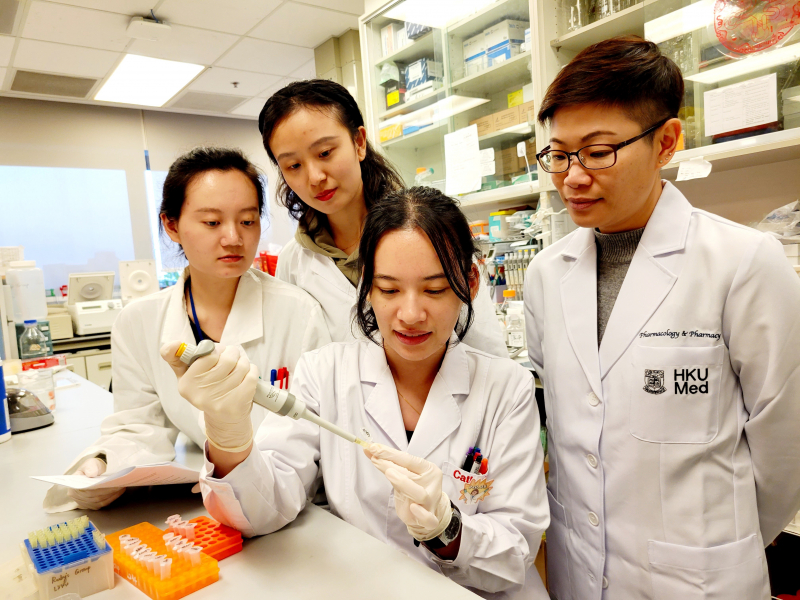
|
|
24 Nov, 2023
HKUMed achieves breakthrough in photoactivatable nanomedicine for the treatment of age-related macular degeneration
HKUMed achieves breakthrough in photoactivatable nanomedicine for the treatment of age-related macular degeneration
|
|
12 Oct, 2022
HKUMed finds 52% and 66% death reduction for molnupiravir and nirmatrelvir-ritonavir users among inpatients with COVID-19; supports early use of oral antivirals in this population of patients
HKUMed finds 52% and 66% death reduction for molnupiravir and nirmatrelvir-ritonavir users among inpatients with COVID-19; supports early use of oral antivirals in this population of patients
https://www.med.hku.hk/en/news/press/20221003-molnupiravir-nirmatrelvir-ritonavi (English) https://www.med.hku.hk/zh-hk/news/press/20221003-molnupiravir-nirmatrelvir-ritonavi (Chinese) |
|
25 Jan, 2022
HKUMed finds risk of myocarditis in adolescents significantly reduced after receiving only one dose of Comirnaty; adolescents urged to get the first dose of COVID-19 vaccine
HKUMed finds risk of myocarditis in adolescents significantly reduced after receiving only one dose of Comirnaty; adolescents urged to get the first dose of COVID-19 vaccine
Click to view full text of Press Release Media coverage: The Standard Online Date: January 25, 2022 Topic: Single BioNTech jab significantly reduces myocarditis risk for teens – HKU research Link: https://bit.ly/3u7C3MS RTHK Chinese Instant News Date: January 25, 2022 Topic: 青少年延長至少三個月打第二針復必泰可降心肌炎機會 Link: https://bit.ly/3r2pG2D RTHK Chinese Instant News Date: January 25, 2022 Topic: 學者建議 12 歲或以上青少年盡快接種第一劑疫苗 Link: https://bit.ly/3G19dA5 CRHK Instant News Date: January 25, 2022 Topic: 港大研究:青少年接種 2 劑復必泰後 患心肌炎風險較接種 1 劑高 6 倍 Link: https://bit.ly/3AOT4wV Now TV News Date: January 25, 2022 Topic: 港大:僅打一針復必泰可大幅降低青少年患心肌炎機會 Link: https://bit.ly/3G51r8j Ming Pao Instant News Date: January 25, 2022 Topic: 港大研究:12 歲以上青少年打兩針復必泰 患心肌炎風險為打一針 7 倍 Link: https://bit.ly/3KPezBY on.cc Instant News Date: January 25, 2022 Topic: 青少年接種復必泰後 3 周打第二針 患心肌炎風險增逾 7 倍 Link: https://bit.ly/3H502jj HKEJ Instant News Date: January 25, 2022 Topic: 港大:青少年打一針復必泰大幅減患心肌炎機會 Link: https://bit.ly/3G9KiKB Wen Wei Po Instant News Date: January 25, 2022 Topic: 【抗擊新冠肺炎】港大籲青少年首針後隔 3 個月再打 Link: https://bit.ly/3fXbMbY am730 Instant News Date: January 26, 2022 Topic: 青少年打復必泰二針 港大建議隔 3 個月 Link: https://bit.ly/3tXMXou Sky Post Instant News Date: January 25, 2022 Topic: 新冠疫苗|兒童染疫失嗅覺險釀火警 專家指勿輕視後遺症 籲快打針 Link: https://bit.ly/3r3ztWk Sky Post Instant News Date: January 26, 2022 Topic: 青少年推遲次針復必泰 降心肌炎風險 Link: https://bit.ly/3IMol6p HK01 Date: January 25, 2022 Topic: 復必泰|港大:青少年打第一針 隔 3 個月打第二針可降心肌炎風險 Link: https://bit.ly/3u3SGZK Topick.hket.com Date: January 25, 2022 Topic: 【疫苗接種】港大研究發現青少年接種 2 劑復必泰患心肌炎風險較接種 1 劑高 6 倍 建議延長 3 個月後再打 Link: https://bit.ly/3IxxKhY etnet Date: January 25, 2022 Topic: 【新冠肺炎】研究:青少年接種1劑復必泰,患心肌炎風險較兩劑低 Link: https://bit.ly/3r1GtTF Hkcna.hk Date: January 25, 2022 Topic: 港大研究:僅打一針復必泰可降低青少年患心肌炎機會 Link: https://bit.ly/3HhSREw Udn.com (Taiwan) Date: January 26, 2022 Topic: 香港研究稱:青少年 2 劑 BNT 心肌炎風險較 1 劑高 6 倍 Link: https://bit.ly/3g12lZ1 |
|
25 Jan, 2022
Facing the dilemma between unmet needs and costly drugs: what are the strategic solutions for rare diseases?Dr Shirley Li spoke as a panelist at the WHO webinar series on country pharmaceutical pricing policies and presented the “Global Access and Unmet Needs of Orphan Drugs” based on the team’s previous work published in Value in Health. |
|
01 Sep, 2021
HKUMed achieves a breakthrough in retinoblastoma treatment by a light-triggered drug release system
HKUMed achieves a breakthrough in retinoblastoma treatment by a light-triggered drug release system
|
|
27 Jul, 2021
HKUMed develops inhaled dry powder formulation of broad-spectrum antiviral against COVID-19 and influenzaHKUMed develops inhaled dry powder formulation of broad-spectrum antiviral against COVID-19 and influenza |
|
13 Apr, 2021
HKUMed discovers a novel mediator of liver fibrosis and its underlying mechanism that can be a new therapeutic target
HKUMed discovers a novel mediator of liver fibrosis and its underlying mechanism that can be a new therapeutic target
|
|
29 Oct, 2020
HKUMed takes leading role in the largest cohort study on global hip fracture burden
HKUMed takes leading role in the largest cohort study on global hip fracture burden
|
|
07 Oct, 2020
香港大學藥理及藥劑學系 - 罕見病藥物政策研究HK01 Healthcare Thinkers 港罕病藥物政策不及低收入國家 罕病聯盟望政府為新藥納入安全網訂明確指引 Skypost Ming Pao Daily News Oriental Daily News |
|
17 Aug, 2020
【明報】腸菌失衡 新冠更惡 少食添加劑 多吃蔬果 |
|
05 Jun, 2020
Dr. Ruby Hoo and her team discovers a novel therapeutic target of ischaemia strokeHKUMed discovers a novel mediator of cerebral ischaemia injury and its underlying mechanism which can be a new therapeutic target for ischaemic stroke A research team from the LKS Faculty of Medicine, The University of Hong Kong (HKUMed) has discovered a new regulator of blood-brain barrier disruption in ischaemia stroke. The discovery provides insight into the new mechanism of blood-brain barrier disruption which allows the future development of effective pharmacological therapy for patients with ischemia stroke... |
|
10 Feb, 2020
【明報】酒精搓手好過噴 溝精油阻礙殺菌 |
|
31 Dec, 2018
【明報】補維D 多鈣傷骨 飲奶日曬就夠 |
|
12 Nov, 2018
【明報健康網】掌握醫療大數據 用藥更精準 |
|
19 Sep, 2018
Press Releases: HKU finds ADHD drug use increase |
|
11 Aug, 2018
【東方日報】傷風感冒須靠免疫系統自愈 |
|
04 Aug, 2018
【東方日報】分清咳嗽類型 免服錯藥反效果 |
|
16 Jul, 2018
【am730】抗生素與腸道益生菌能否互助共存? |
|
09 Jul, 2018
【am730】吃啥變啥:腸道益生菌與健康 |
|
25 Jun, 2018
【am730】認識眼鼻皮膚的抗敏藥物 |
|
11 Jun, 2018
【am730】為類固醇副作用釋疑 |
|
04 Jun, 2018
【am730】上呼吸道感染的治療 |
|
28 May, 2018
【am730】舒張氣管的藥物治療 |
|
21 May, 2018
【am730】藥片種類繁多 服用方法要清楚(下) |
|
14 May, 2018
【am730】藥片種類繁多 服用方法要清楚(上) |
|
07 May, 2018
【am730】基因檢查預防抗甲亢藥副作用 |
|
30 Apr, 2018
【am730】同病不同藥 勿亂服他人藥物 |
|
23 Apr, 2018
【am730】認識藥理始可對症下藥 |
|
16 Apr, 2018
【am730】藥理學與藥物的關係 |
|
09 Apr, 2018
【am730】新舊抗凝血藥 效用各有高低 |
|
06 Apr, 2018
【明報】臨牀藥劑服務增 |
|
26 Mar, 2018
【am730】了解降膽固醇藥物 副作用不再可怕 |
|
19 Mar, 2018
【am730】胃藥PPI與胃癌的風險 |
|
12 Mar, 2018
【am730】骨質疏鬆性骨折 用藥可預防 |
|
25 Feb, 2018
【杏林在線】一粒藥丸的誕生 |
|
12 Feb, 2018
【am730】藥物使用與儲存的正確方法 |
|
05 Feb, 2018
【杏林在線】罕見病藥物資助 |
|
03 Feb, 2018
【醫生與你】皮膚健康 |
|
29 Jan, 2018
【am730】藥劑師在基層醫療系統中的角色 |
|
04 Dec, 2017
【杏林在線】外遊攜帶藥物要小心 |
|
25 Sep, 2017
【杏林在線】蚊怕水成分 |
|
18 Sep, 2017
【杏林在線】止汗劑功效 |
|
17 Jul, 2017
【杏林在線】認知障礙症患者用藥 |
|
05 Jul, 2017
Media RTHK - 藥物基因組學 |
|
27 Jun, 2017
Media RTHK - 藥物安全 / 知己知彼 |
|
13 Jun, 2017
Media RTHK - 藥物相互作用 |
|
14 Nov, 2016
Newspaper columns - 肉毒桿菌之美容學說 |
|
30 Oct, 2016
免疫治療知多啲(二) |
|
24 Oct, 2016
Newspaper columns - 免疫治療知多啲(一) |
|
27 Sep, 2016
Newspaper columns - 胃酸倒流 |
|
19 Sep, 2016
Newspaper columns - 善用抗生素 |
|
12 Sep, 2016
Newspaper columns - 認識退化性關節炎 |
|
05 Sep, 2016
Newspaper columns - 兒科,絕不「小兒科」 |
|
29 Aug, 2016
Newspaper columns - 藥物迷思 |
|
23 Aug, 2016
【杏林在線】烈日防曬須知 |
|
22 Aug, 2016
Newspaper columns - 藥物與食物的相互作用 |
|
15 Aug, 2016
Newspaper columns - 藥物敏感你要知 |
|
08 Aug, 2016
Newspaper columns - 鼻敏感知多少 |



